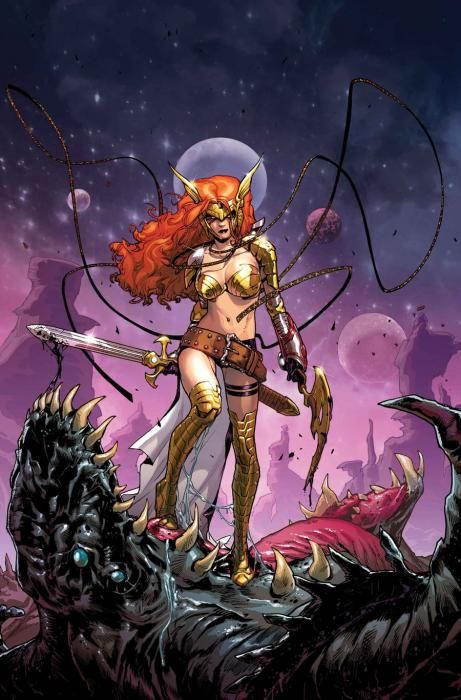Originally solicited to be co-written by Brian Michael Bendis and Neil Gaiman, "Guardians of the Galaxy" #6 is written by Bendis with Gaiman receiving credit as a consultant. The story in this issue integrates Gaiman's creation, Angela, into the adventures of the Guardians through the brokenness of time spawned by "Age of Ultron."
Bendis uses the time calamity to reunite Peter Quill with Thanos, giving "Guardians of the Galaxy" #6 a very clear inroad towards a certain-to-be-pending "Infinity" crossover. Bendis is trying to settle in to the characters, using Tony Stark as the gateway, but the team very much still reads as though it is in the formative stages despite the fact that Bendis fully accepts Thanos' shared history with Peter Quill. The Guardians start to gel a bit more towards the end of the issue, as the fight with Angela reaches a climax, but they just never seem as relatable as they were under the writing of Dan Abnett and Andy Lanning. The issue wobbles a bit more as once again the Watcher does a bit more than watch, virtually biting his nails and rocking uncomfortably back and forth as something that should be impossible seems all too possible. He engages the Guardians in conversation about the thing that should not be, very much sliding out of "Watcher" mode and into unwilling participant in this story mode.
While the story chugs along, with a couple highlights and surprises, the art is the star of "Guardians of the Galaxy" #6. Not only does Sara Pichelli continue to deliver gorgeously refined, economic artwork with strong characters, energetic battles and vibrant detail, but she gets a tagteam assist from Olivier Coipel. When I bought the issue, I didn't expect to get six pages from him, but Coipel is a welcome addition any time he wants to contribute art to any comic book and this one in particular. With rich, deep shadows from Mark Morales' inks and cool tones from colorist, Ive Svorcina, Coipel delivers a half-dozen pages of conversation between Thanos and Quill. Quill is visibly agitated as Thanos eggs him on. Coipel gets in all of the great angles and poses for Thanos, making the interruption more welcome than not.
Pichelli's art, meanwhile, is largely slow motion fight sequence. The artist chooses moments of contact or just after contact to share with the reader. This is buoyed by the seeming absence of gravity, although the combat between Angela and Gamora (and eventually the rest of the Guardians) occurs in the Blue Area of the moon. The impactful moments of the battle are big and loud, either afforded space through Pichelli's panel construction or framed in a broad panel that is a fine widescreen-simulation. Justin Ponsor's colors add so much texture that Pichelli's art graciously accepts and somehow amplifies, making the art and color work seem to originate from a single source.
"Guardians of the Galaxy" #6 continues to drift through the Marvel Universe. The encounters the group has and the interpersonal relationships they are building are entertaining and enjoyable, but I'm just not sure what purpose this comic book serves right now, save to generate product for the bookshelves once the movie hits. Most of the characters are one-note, lacking the depth and intrigue a band of space pirates could -- and should -- have. Now that Angela has gotten a star turn on the stage and Thanos has had words with Quill, maybe the series can get to the greater purpose the Guardians serve and get some heart involved in their future adventures.

